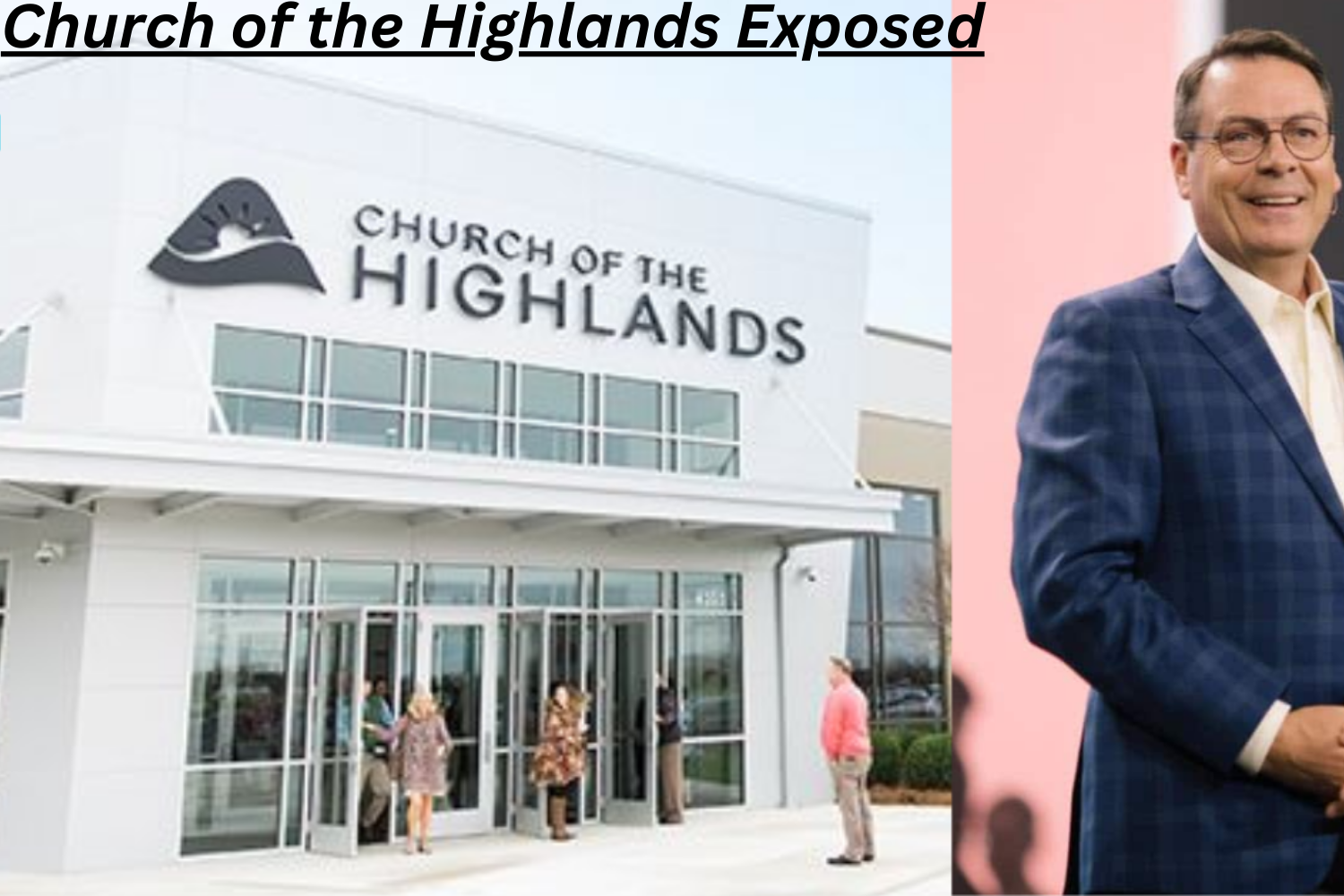The Church of the Highlands Exposed has become a household name, attracting thousands with its vibrant worship services and community outreach programs. But beneath the surface lies a complex web of controversies and criticisms that few dare to explore. What happens when faith collides with ambition? As this mega church continues to grow, so do the questions about its practices. This blog post will dive deep into the heart of the Church of the Highlands, peeling back layers to reveal an untold truth that could change how you view one of America’s most prominent religious institutions. Are you ready to uncover what lies behind this charismatic facade?
Brief history of the Church of the Highlands
The Church of the Highlands was founded in 2001 by Chris Hodges in Birmingham, Alabama. It began as a small congregation meeting at a local school, driven by a vision to bring hope and healing to the community.
With an emphasis on contemporary worship and practical teachings, it quickly gained traction. By tapping into modern technology and social media, they reached audiences far beyond their initial locale.
In just a few years, attendance skyrocketed. The church expanded its reach with multiple campuses across Alabama. Each new site aimed to create an inclusive environment where anyone could feel welcome.
As they grew, the church embraced various initiatives focused on outreach and service projects. This commitment helped foster strong connections within communities while enhancing their reputation as a caring institution that goes beyond traditional religious practices.
Growth and Expansion of the Church
The Church of the Highlands has witnessed remarkable growth since its inception in 2001. Starting in a small venue, it quickly became one of the largest mega churches in the United States. This rapid expansion can be attributed to engaging worship services and an appealing community atmosphere.
Innovative outreach programs have drawn thousands each week. The church’s commitment to serving local communities through various initiatives has further solidified its presence. From food drives to youth camps, these efforts resonate well with members.
Technology plays a significant role too. Live streaming services reach audiences beyond physical locations, allowing people from different states and countries to connect with their message.
As new campuses opened across Alabama and beyond, membership escalated dramatically. Each location embodies the same core values while catering to local needs, contributing significantly to this phenomenon of growth within contemporary religious movements.
Controversies and Criticisms against the Church
The Church of the Highlands has faced its share of controversies over the years. Critics argue that the church prioritizes growth and spectacle over genuine spiritual engagement. This perception leads to questions about authenticity among congregants.
Some former members have described a culture that discourages dissent. They claim dissenting voices are silenced, creating an environment where conformity is expected. Such reports raise alarms about freedom within the congregation.
Additionally, accusations of aggressive marketing strategies to attract new members have surfaced. Detractors suggest this approach commodifies faith, prompting debates on whether churches should operate like businesses.
Concerns also exist regarding transparency in leadership decisions and financial practices. Many wonder how much influence is wielded by select leaders without proper accountability mechanisms in place—an issue that can lead to significant distrust within any community seeking truth and connection.
Financial Scandals and Mismanagement Allegations
Financial scandals have recently cast a long shadow over the Church of the Highlands. Allegations of mismanagement and lack of transparency have raised eyebrows among both members and outsiders.
Reports suggest questionable spending practices, including lavish expenditures on church events while basic community needs went unmet. Critics argue that these financial choices reflect priorities that may not align with the church’s stated mission.
Additionally, concerns about accountability mechanisms within the organization have surfaced. Some former members claim they were discouraged from questioning financial decisions, creating an atmosphere where transparency was absent.
The implications are significant for trust within congregations. When faith is intertwined with finances, any hint of scandal can erode confidence in leadership. Many now wonder how these issues might affect future growth and community support for this mega church.
Former Members Speak Out: Personal Experiences with the Church
Many former members of the Church of the Highlands Exposed have shared their experiences, shedding light on life inside this mega church. For some, it began as a welcoming community filled with hope and purpose. They were eager to grow in faith alongside fellow believers.
However, as time went on, frustrations emerged. Some individuals reported feeling pressured to conform to rigid expectations. The push for financial contributions often weighed heavily on congregants, leading many to question where their money was truly going.
Others described moments of isolation when they tried voicing concerns about church practices or leadership decisions. A sense of disillusionment settled in for those who felt that once they expressed dissenting opinions, support from the community faded away.
These candid accounts reveal a complex narrative—a mixture of genuine connection and underlying tension that marked their time at the Church of the Highlands.
Response from Church Leadership
Church leadership has publicly addressed the allegations and controversies surrounding the Church of the Highlands. They emphasize their commitment to transparency and accountability.
In various statements, they highlight their achievements in community service, outreach programs, and support for local charities. Leaders assert that these initiatives reflect their dedication to serving others rather than focusing solely on financial gain.
They also encourage open dialogue with both current members and critics alike. The church’s stance is clear: they welcome constructive feedback while defending their practices as aligned with biblical teachings.
Pastor Chris Hodges has taken a proactive approach by participating in interviews, aiming to clarify misconceptions about the church’s operations. His messages often stress unity within the congregation amid challenges.
While some remain skeptical of these reassurances, others appreciate leadership’s willingness to engage openly. This dynamic illustrates an ongoing conversation about faith organizations’ roles in contemporary society.
Moving Forward: Implications for Mega Churches and Religious Institutions
The Church of the Highlands Exposed has sparked a critical conversation about mega churches and their role in modern society. As these institutions grow, so do the expectations placed upon them.
Transparency is becoming more crucial than ever. People are demanding to know how funds are being used and what kind of impact these organizations have on their communities. Trust is built through open dialogue, not secrecy.
Moreover, accountability cannot be overlooked. Religious leaders must recognize that with great power comes great responsibility. They need to ensure ethical practices within their operations.
Additionally, the focus on personal stories from former members highlights the importance of listening to congregants’ experiences. These narratives can guide future improvements and foster healthier church environments.
As religious institutions navigate this evolving landscape, they must adapt or risk losing relevance in an increasingly skeptical world.
Conclusion
The Church of the Highlands is a fascinating case study in modern megachurch culture. Founded in 2001, it has skyrocketed to prominence with its innovative approach and community outreach efforts. The rapid growth of this church speaks volumes about its appeal, yet it also raises several questions regarding transparency and accountability.
As controversies have emerged, critics have scrutinized various aspects of the church’s operations. Allegations around financial mismanagement and ethical concerns invite deeper investigation into how such large organizations operate behind closed doors. Former members bring their experiences to light, shedding insight into what life within this dynamic environment really entails.
Despite facing challenges from dissenters, the leadership continues to maintain an optimistic front. They emphasize their commitment to serving their congregation while navigating these turbulent waters.
This situation reflects broader implications for mega churches and religious institutions at large. As they garner immense followings, accountability becomes crucial in maintaining integrity and trust among congregants.
The journey of the Church of the Highlands Exposed encapsulates both aspiration and cautionary tales as faith communities continue to evolve amidst changing societal norms. How will they adapt moving forward? Only time will tell if they can rise above controversies or if those issues will haunt them indefinitely.



